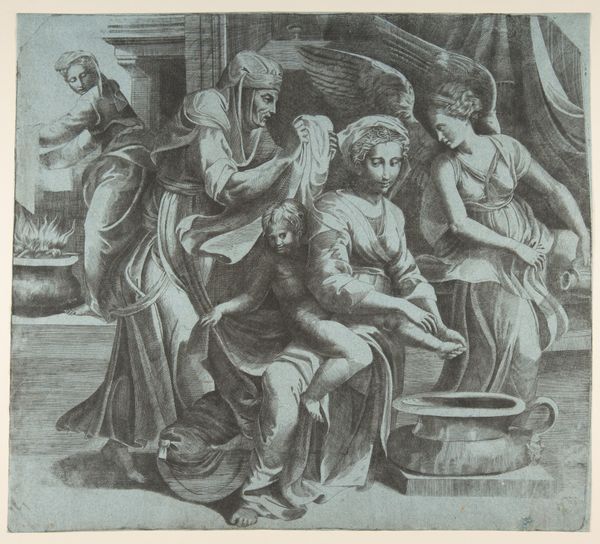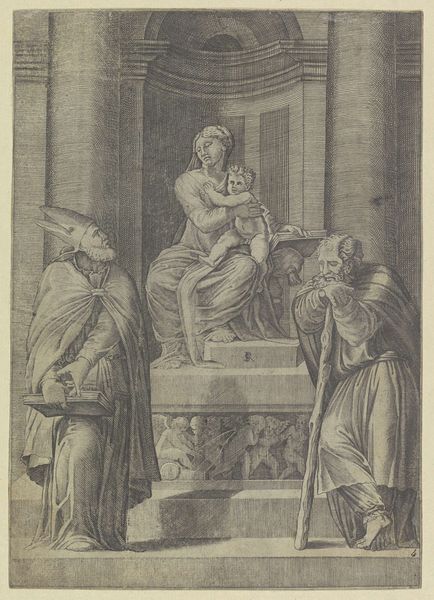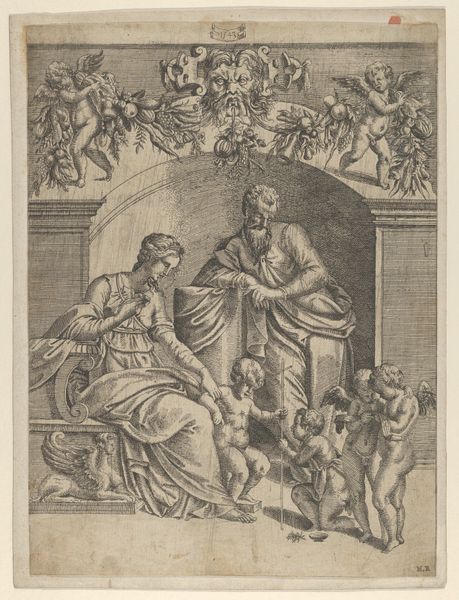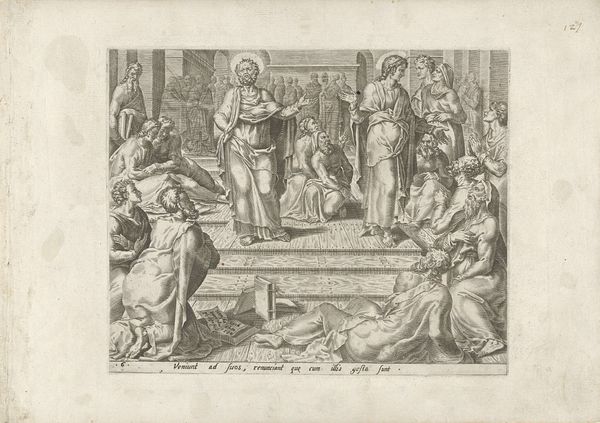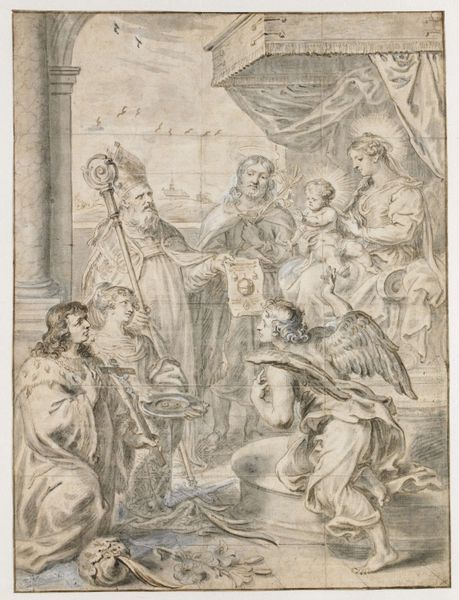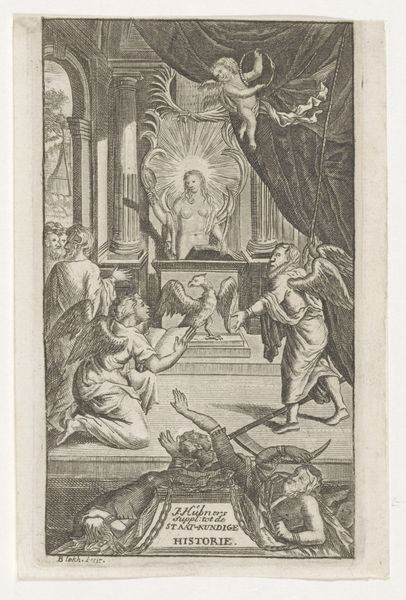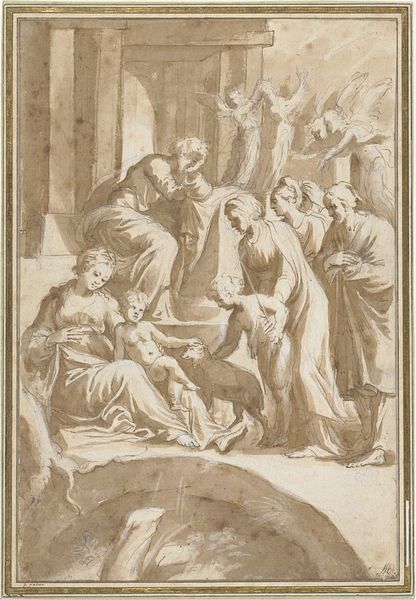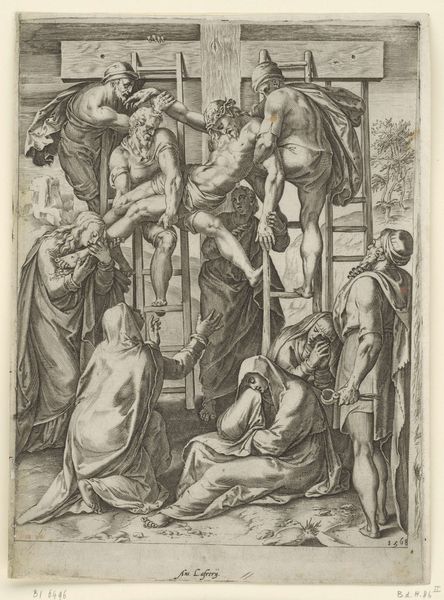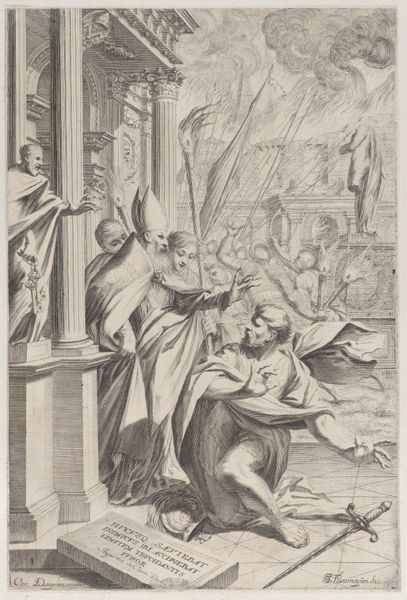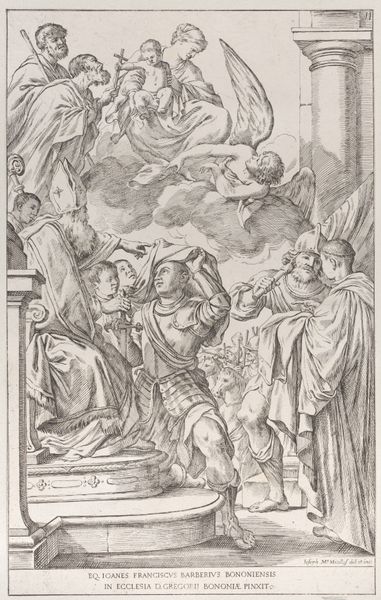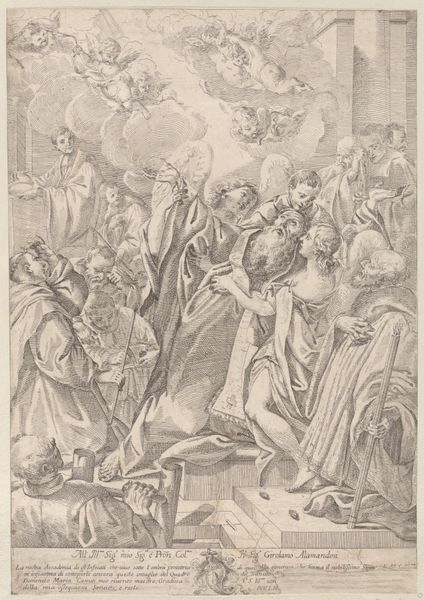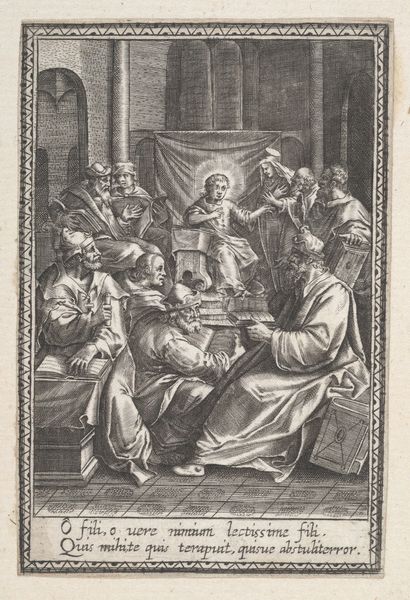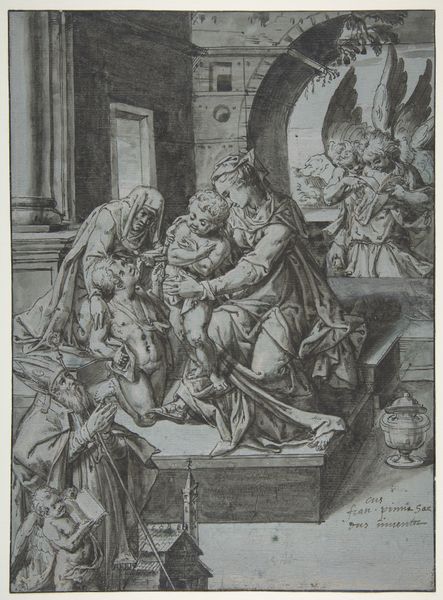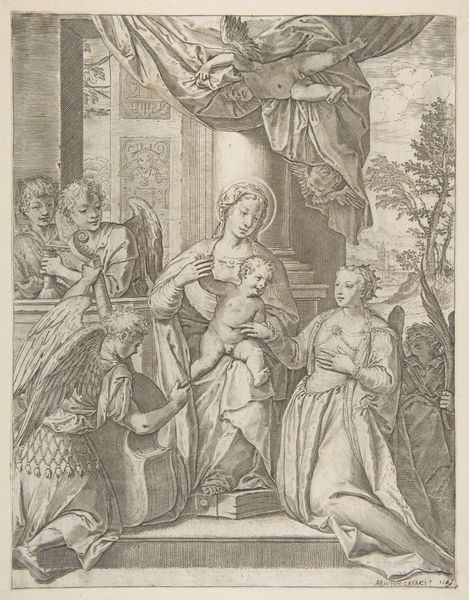
print, engraving
#
narrative-art
# print
#
old engraving style
#
figuration
#
line
#
history-painting
#
italian-renaissance
#
engraving
Dimensions: height 345 mm, width 368 mm
Copyright: Rijks Museum: Open Domain
Editor: Here we have "Maria washes the feet of young Christ," an engraving made sometime between 1509 and 1546 by Giulio Romano, currently held in the Rijksmuseum collection. The image feels quite formal and staged, almost theatrical in its composition. What can you tell me about how this image functioned within its cultural context? Curator: That's an astute observation. This image needs to be understood through the lens of the Italian Renaissance and the increasing role of printed imagery. Consider how printmaking democratized access to religious narratives. Prints like this were not merely decorative, they served as a medium for disseminating interpretations of scripture and promoting specific theological viewpoints. Who do you think this work was made for? Editor: Perhaps affluent families for private devotion? Curator: Precisely. The scale and detail suggest it wasn't intended for mass consumption. Consider the meticulous detail. The architecture suggests wealth and status. Notice how Mary's act of washing Christ's feet isn't simply about hygiene. It’s about humility and service, reinforcing the virtues the elite would want to be associated with and promoting a particular vision of religious life, with its power dynamics encoded in it. How does knowing this influence your interpretation? Editor: It makes me see the power dynamics at play more clearly. It's no longer just a sweet image, but something that reinforces social hierarchies. I hadn't considered how printmaking allowed for such targeted dissemination of ideas. Curator: Indeed. Printmaking and artwork changed the playing field for the consumption and propagation of stories and political discourse. Editor: It’s fascinating to consider how something that seems so delicate and beautiful can be so politically charged. Thanks!
Comments
No comments
Be the first to comment and join the conversation on the ultimate creative platform.
